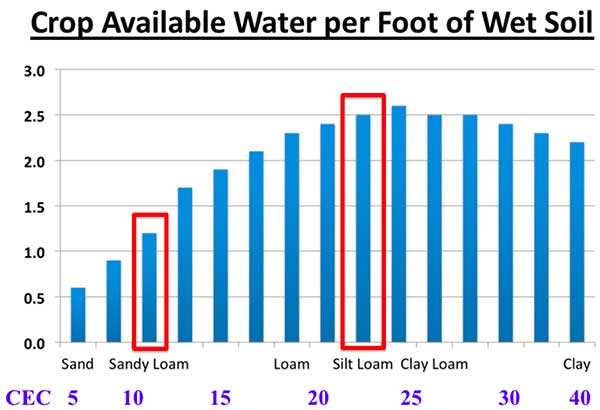Crop Intelligence AGRONOMY INSIGHT
Volume 1 – Early Season Crop Available Soil Water (CASW)
June 1, 2018
Written by Elston Solberg
Greetings Crop Intelligence Network!!
The Crop Intelligence Team recently looked at all the available moisture probe data and can happily report that there are 200+ equilibrated probes actively returning crop available soil water (CASW) data to a soil depth of 100 cm.
While it was dry for many of us last year, and most may argue that the precipitation from harvest 2017 to seeding 2018 was below ‘normal’, we are observing 3 distinct CASW categories:
- WET sites with 8+” (200 + mm) of CASW
- MOIST sites with 4-8" (100-200 mm) of CASW
- DRY sites with <4” (<100 mm) of CASW
This may be a surprise to many of you BUT the big surprise to us is that of the growers who have multiple moisture probes, most have fields that fall in ALL categories! How can that happen, you may ask?!
Well, there are a multitude of reasons for this reality which, at the end of the day, is the reason measuring the amount of CASW is so very important. I will not bore you with the hundreds of ‘why’ details BUT as Professor Les Henry recently wrote (Grain News, February 2018), “Moisture in the ground is a certainty, rainfall is a probability.” A succinctly profound statement, Sir! I sit in awe.
So a little review . . . .
Remember that the first 4” of crop available water goes to producing the factory and every inch after that goes to yield. Obviously the WET fields have the greatest yield potential plus a few specific agronomic concerns if we get significant early season precipitation. The DRY fields currently don’t have enough soil water to build the crop factory so the issues here are completely different. Obviously, the MOIST fields reside in between from a yield potential perspective.
This is what things boil down to . . . If Grandpa’s field is WET we have yield increasing strategies to contemplate, and given it’s early in the season, we have several weeks to get gear and products in place while we continue monitoring water driven yield potential. If Grandma’s field is DRY then we should contemplate a completely different set of agronomic decisions around previous input plans like herbicide (different product choice, spot versus blanket) and fungicide (no vs yes). There are others and there is plenty of time to watch Mother Nature and pull appropriate timely triggers. If Uncle Fred’s field is MOIST, the decisions are different if there is 7.5” of CASW vs 4.5”. No matter the individual field CASW scenario when this information is known on May 22 there is plenty of time to make decisions and get organized to implement them all the while observing daily updates of Water Driven Yield Potential.
Many of you with 1 or 2 moisture probes are now likely wondering how you can identify the early season water driven yield potential for fields that don’t have probes.
Your most valuable tool is a Brown moisture probe coupled with soil tests and last year’s individual field yields. A Brown probe is simply a metal rod with a ball bearing on its tip. Its operation is simple. All you do is walk across a field and penetrate the soil until it can’t go any deeper. The probe will only go to the depth of soil moisture. In order to confidently utilize the Brown probe you will need to know the soil texture of your fields. This can be obtained from a soil test, soil survey or hand texture. From these 2 pieces of information we can fairly accurately estimate crop available water with simple publically available information. Remember, for now, we are focussed on getting you into the Yield Stadium and Section P for Profit. As Crop Intelligence learns from itself, and we all get smarter, we will be able to get you into your Row and Seat in the preferred Section.

An example – The average depth of Brown probe moisture, in a silt loam field, is 3 feet. From the graph below there is 7.5” of CASW (3 x 2.5”). If the soil texture is a sandy loam with the same Brown probe depth then there is 3.75” of CASW (3 x 1.25”). So my suggestion would be, ASAP , get all of your fields moisture probed and matched up with soil textures to make these simple calculations. It’s just that easy!! And greatly supplements the high tech, daily updated, data supplied by Field Connect and Crop Intelligence

While this approach works and is simple, the majority of us will not do this which is why most growers expand the number of probes 3- 4X after one successful season with the Crop Intelligence app.
All this said we’re looking forward to a great growing season filled with a multiple of high value, real time, ROI decisions powered by Crop Intelligence.


